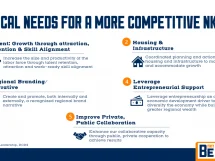
Cushy wasn’t comfortable for Chris Radcliffe
By Abby Laub
Editor of BG Magazine – Lexington,a publication of The Lane Report
Fear drives Chris Radcliffe to make most of his decisions. Change is his comfort zone.
“Fear is a huge factor in my life,” he said. “I am scared of every-freaking-thing. As soon as I realize I’m not doing something I want to do is because I’m afraid of it, then I do it.”
Whether it is trekking a glacier within inches of imminent death or making a bold career move, the Louisville native and Berea resident is all about challenging himself.
Conquering fear is one of the reasons the 33-year-old left a cushy photography job at Eastern Kentucky University to work for himself in the photography business. Several life-changing overseas trips and hours of self-reflection were involved, and a brief stint working as creative director for a large farm and ranch company confirmed the decision.
“I was sitting at a desk all day, every day,” Radcliffe said. “I had just gotten back from a trip to Tibet. But I was trying to make a lifestyle choice, do I continue to chase for these things and be gone for months at a time with a family at home, or do I look for an 8-to-5 job and be off on weekends and have a schedule like everyone else we know and be able go to the lake?”
Ultimately, adventure called – but more importantly he panicked when realizing that the “core of who I was was going away.”
Beginning as a kid investigating his family’s 30-plus acres with a cheap camera and continuing through college, Radcliffe’s appetite for adventure and capturing things on film was insatiable.
“I remember exploring my backyard with this little piece-of-crap teal blue camera and shooting the pine trees and the snow and the sun reflecting off the ice,” he said. “We had 30 acres in the middle of nowhere, and I had no friends. I played alone a lot as a kid. I just explored constantly.”

In college, an internship at EKU led to a full-time job as campus photographer. Radcliffe ultimately would spend 10 years in the position, pursuing little freelancing gigs on the side.
Then, significantly, friends going to Carter Caves for an adventure race invited him to come photograph it. Radcliffe hit the ground running, thrilled by the elements of danger and excitement while capturing stellar
images. He got lost in a dark flooded cave (a Boy Scout troupe saved him), and fell in love with photographing adventure racing.
“It was amazing,” he recalled. “I couldn’t believe – people do this? Everybody was smiling and happy and fit and well mannered; it was an atmosphere of high fives and chest bumps. Everybody was so cool and happy to be alive.”
That experience led to overseas adventure race photography, and he set a goal of being “the guy in the United States who people called to cover this stuff for editorial and commercial services.”
Radcliffe has now done six international photo trips, including to Patagonia in southernmost Argentina, to Tibet in mountainous western China and to the United Arab Emirates capital Abu Dhabi. He’s shot publication covers, including prominent Triathlete magazine, as the international experience makes each
successive sale easier.
Yet, he jokes he still is learning how to make the big bucks off of his adventures, which he sees more as personal projects.
“Every renowned photography blog talks about personal work,” Radcliffe said. “Mine has always been the expedition photography. I don’t do that necessarily to make money, but it’s an extension of who I am. And people connect with that; there are always good stories. You have to go develop stories and make yourself a more interesting person. It’s part of your brand.”
Meanwhile, to keep the lights on and provide for his family, he does commercial and corporate work, or heads to Nashville to shoot a country music band, and he does portraits – the bread and butter of photography work.
Acting with intention, giving himself a chance to grow and innovate, was an important part of the reason why he left EKU and then his creative director job shortly after.
“I felt like I had reached a plateau there,” Radcliffe said. “There was no elevation of my position.”
It can become an issue in any job, he explained.
“When you’re good at a thing, people want to keep you in that box because you provide a good service; they just want you to stay there. I don’t mean any slams on them. … I loved higher education and I wanted to have a greater impact on it, but I couldn’t do it from that spot.”
Radcliffe recommends a nugget of advice from Steve Jobs about knowing if it is time to move on to a new job: “If I look in the mirror every morning and know it is the last day of my life, would I want to be doing what I am doing today? And if the answer were ‘no’ too many days in a row, I know it is time to change something.”
However, Radcliffe adds another dimension in his approach to such questions.

“You have to separate yourself from a lot of things,” he said. “You have to detach yourself from personal aspirations and dreams and make sure the decisions you’re about to make is rooted in truth, because everybody gets frustrated and wants to walk out with the big middle finger in ‘Jerry McGuire’ style.”
He also recommends one should take time to reflect, read like crazy, journal and learn to listen to their instincts. Additionally, being nice goes a long way.
“I’m not a super business-savvy guy, but for me my secret to success is being likable,” Radcliffe said. “Work quality matters, but people want to work with those they can tolerate in consistent ways.”
Contrary to popular beliefs about keeping work and personal life separate, Radcliffe is a proponent of merging them if you love what you do.
“I like it to be together. I like to live in a perpetual state where it’s all existing at the same time,” he said. “I like to think about family when I’m working, and I like to think about work with my family. But not in a
distracting way – I like to do things at a soul level and produce a good that is intrinsic to who I am.”
Survival also is intrinsic for Radcliffe, who remembers having to jump across a raging stream heading down a glacier to photograph adventure race competitors leaping across the same divide.
“If you would have fallen in that…” he trailed off. “It was so damn cold, and there was a storm
coming in.”
Primal instincts kick in – perhaps driven by fear.
“I’m not very strong, but I have an ability to struggle and just kind of go left-right, left-right through a lot of things,” he said. “When you’re only concerned with having enough food and water to sustain you and you’re going to get stranded otherwise, the things you think about and the things that are important float back to you in an effortless way.”
In a career, the principles are the same. Follow instincts.
Advice is good and relationships are important, “but most of the time when we are seeking the answer to a question we already know it,” Radcliffe said.
To see some of Radcliffe’s work, visit chrisradcliffephotography.com.
Freelancers are on the rise
Like Chris Radcliffe, freelancers are on the rise in America.
According to a recent Forbes Magazine study, roughly one in three Americans are freelancers, and by the year 2020, they are projected to make up 50 percent of the full time workforce.
Quartz predicts that in 10 years 40 percent of the workforce will be freelance workers.
Freelancers benefit in many ways. Job freedom, saving time and money commuting every day, more flexibility and room for growth and the ability to shape a career around family. Employers also benefit, the most obvious reasons being not having to pay for insurance and benefits and costly office space.
There are downsides, though. Work is not always steady, benefits are often your responsibility, and by default freelancers must be business savvy entrepreneurs.
According to forbes.com, “The freelance economy is exploding at exactly the same moment that companies are undergoing a major shift in how they hire. Talent is moving from a fixed cost (and one that’s historically been one of the largest across a business) to a variable cost, with companies staffing up and down as needed. Businesses have the ability to quickly on-board hundreds or thousands of freelance workers — provided they have the tools and systems in place to manage them.”




















Add Comment